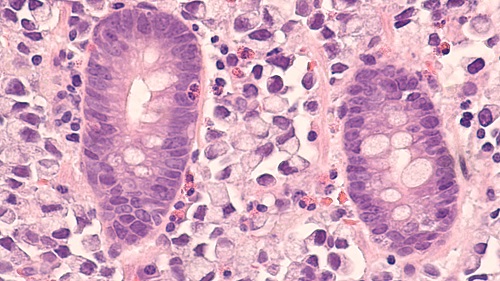
Immunohistochemistry Techniques
Immunohistochemistry (IHC)
Asst.Prof.Dr. Nahidah Ibrahim Hammadi
Clinical Laboratory Science –Pharmacy college-university Of Anbar
Immunohistochemistry (IHC)
It is a very important technique used to detect whether cancer cells or hormones have receptors for them or not. And this HER 2 receptor type
It is a dye technique used for frozen or newly excised breast cancer cells, where this technique is very useful in developing a treatment plan for treating types of cancer, where the results for these proteins are positive in the presence of these receptors that are an indication of the presence of cancer cells.
Sample preparation
Sample preparation in the appropriate manner is necessary to maintain cell morphology, tissue structure, and antigenicity of the target epitopes. Therefore, tissues must be collected, fixed and cut appropriately. Paraformaldehyde solution is often used to stabilize tissues.
When preparing tissues, they can be cut or used whole, depending on the purpose of the experiment and the tissue studied. Before cutting, the tissue sample can be immersed in a medium, such as paraffin wax or cryogenic media. Histological sections can be obtained using a variety of instruments, the most commonly used being a microtome, a cryostat, and a vibrating blade microtome. Samples are usually divided into sections between 3 and 5 micrometers thick. The sections are then placed on slides, dried with alcohol washes of increasing concentration (eg 50%, 75%, 90%, 95%, 100%), wiped with a detergent such as xylene and then photographed under a microscope. Depending on the method of tissue fixation and preservation, the sample may need additional steps to become available for antibody binding, including deparaffinization and antigen retrieval. For formalin-fixed paraffin-embedded tissues, antigen retrieval is often necessary, and involves pretreatment of tissue sections with heat. These steps affect whether or not tissue is discolored.
Keywords : Histological Changes Spirulina, liver, mice



